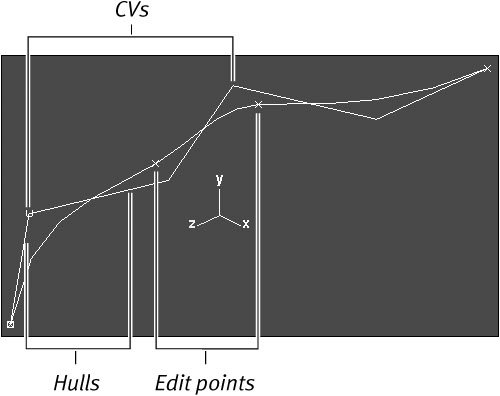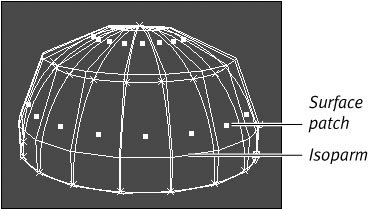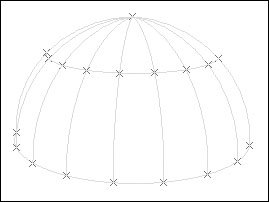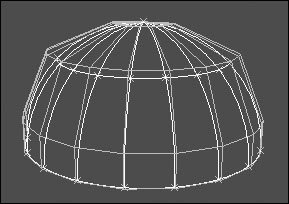About NURBS Objects
| NURBS object creation is a Maya strongpoint because of the precise control it affords you over the final surface. There are two types of NURBS objects: curves and surfaces. NURBS curves have three main components: control vertices (CVs), edit points, and hulls (Figure 7.2). You use these components to create and edit curves in different ways. As you grow familiar with creating NURBS curves, you'll likely come to prefer one component to the others, making it your primary editing method. Figure 7.2. NURBS components are used to easily and quickly change the shape of an existing curve or surface. In addition to CVs, edit points, and hulls, NURBS surfaces have the following more advanced components: isoparms and surface patches (Figure 7.3). Both of these components are uneditable pieces of the NURBS surface. You can edit any NURBS surface that was created from a curve (for example, a revolved surface) by editing components of the original curve or by editing the surface's components directly. When a surface is created from one or more curves, it remains linked to that curve through a history connection. Thus, when you modify a curve, you're also editing the surface. Figure 7.3. NURBS surface components are used to manipulate the shape and composition of the surface. Each NURBS component (edit point, CV, and so on) can be displayed and edited both individually (Figure 7.4; edit points are shown) and with other components (Figure 7.5; edit points and hulls are shown). NURBS curves are an integral part of NURBS modeling because they help you create and edit surfaces. This chapter will provide the foundation you need to control the look of NURBS curves and surfaces. Figure 7.4. Surface edit points can be shown by themselves to make selection and editing easier. You can select each component by clicking its icon, in this case a small x. Figure 7.5. Maya lets you show or hide as many components as you want to view at any given time. This helps you narrow down your selection while still getting a good idea of what the object's other components look like.
|
EAN: 2147483647
Pages: 185




 Tip
Tip